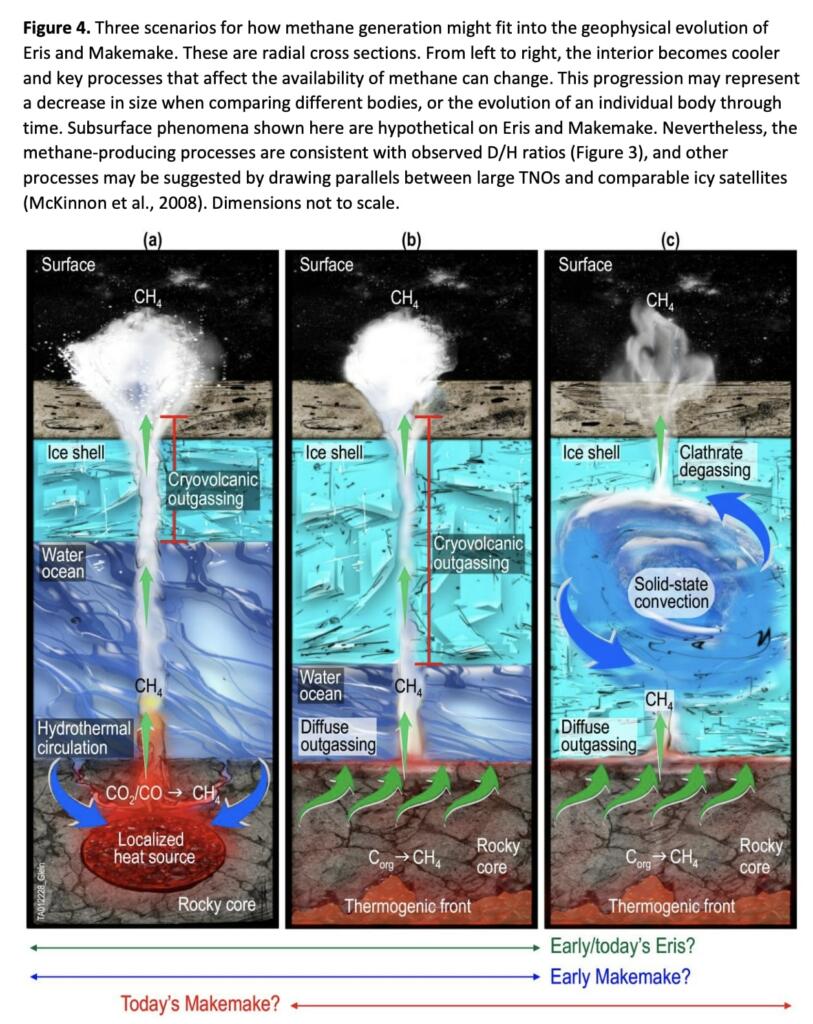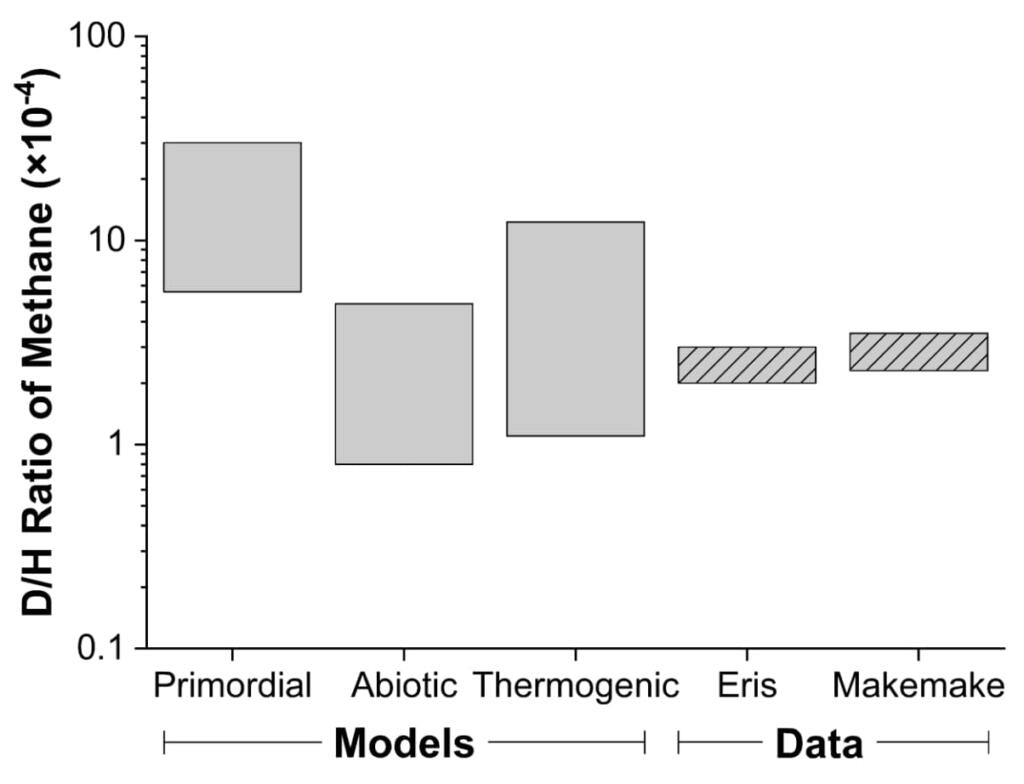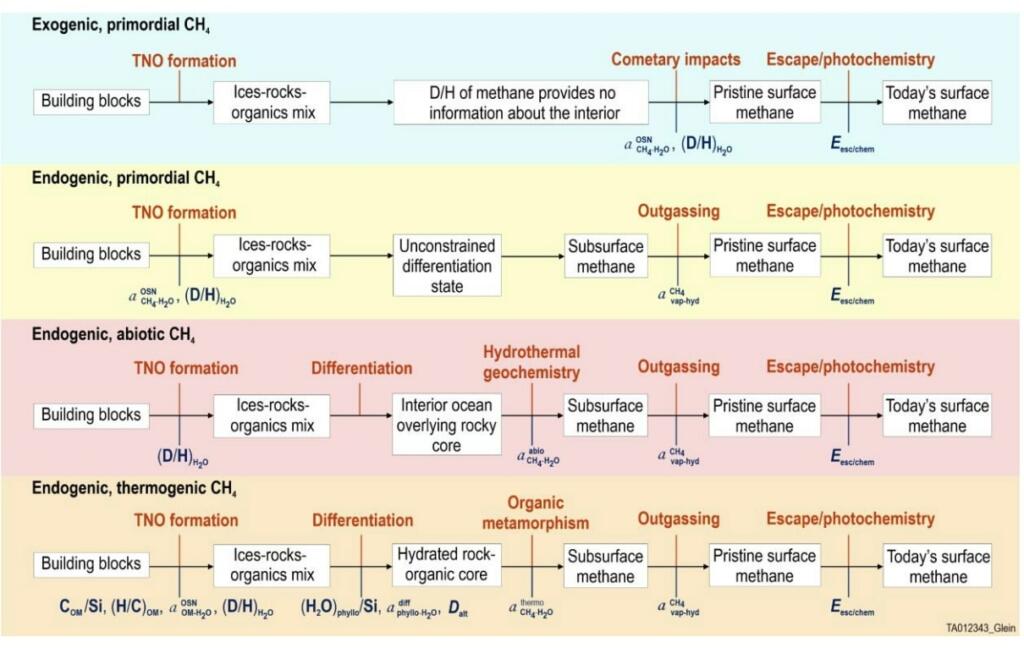Dwarf planets Eris and Makemake (out by Pluto) have surfaces bearing methane ice of unknown origin. This ice can provide important insights into the origin and evolution of volatiles in the outer solar system.
We probably need to send new probes to the Dwarf planets to conclusively determine if liquid oceans have microbial life.
Because producing abiotic or thermogenic methane likely requires temperatures above ~150°C, they infer that Eris and Makemake have rocky cores that underwent substantial radiogenic heating. Their cores may still be warm/hot enough to make methane. This heating could have driven hydrothermal circulation at the bottom of an ice-covered ocean to generate abiotic methane, and/or metamorphic reactions involving accreted organic matter could have occurred in response to heating in the deeper interior, generating thermogenic methane. Additional analyses of relevant thermal evolution model results and theoretical predictions of the D/H ratio of methane in the solar nebula support our findings of elevated subsurface temperatures and an apparent lack of primordial methane on Eris and Makemake. It remains an open question whether their D/H ratios may have evolved subsequent to methane outgassing. They also suggest that lower-than-expected D/H and 84Kr/CH4 ratios in Titan’s atmosphere disfavor a primordial origin of methane there as well. Recommendations are given for future activities to further test proposed scenarios of abiotic and thermogenic methane production on Eris and Makemake, and to explore these worlds up close so that they can see if they bear additional evidence of endogenic processes.





Brian Wang is a Futurist Thought Leader and a popular Science blogger with 1 million readers per month. His blog Nextbigfuture.com is ranked #1 Science News Blog. It covers many disruptive technology and trends including Space, Robotics, Artificial Intelligence, Medicine, Anti-aging Biotechnology, and Nanotechnology.
Known for identifying cutting edge technologies, he is currently a Co-Founder of a startup and fundraiser for high potential early-stage companies. He is the Head of Research for Allocations for deep technology investments and an Angel Investor at Space Angels.
A frequent speaker at corporations, he has been a TEDx speaker, a Singularity University speaker and guest at numerous interviews for radio and podcasts. He is open to public speaking and advising engagements.


Its all Methane. That means either there is like or that Thomas Gold was right (abiotic Methane and natural gas). My money is on Thomas Gold
Theres more signs of life in one of my farts.
They found organic material. They did not find life. Organic material is anything with Carbon in it.